Ever witnessed a creature that seems to change its appearance right before your eyes, without actually changing its physical properties? Nature has produced a fascinating reptile that appears to shift colors depending on how light strikes its scales. This remarkable phenomenon belongs to the Sunbeam Snake, a reptile whose iridescent scales create an optical illusion of shifting hues when viewed from different angles. This visual magic has made these serpents objects of fascination among herpetologists, optical scientists, and reptile enthusiasts alike. Let’s explore the captivating world of this color-shifting wonder and understand the science behind its mesmerizing display.
The Sunbeam Snake’s Identity
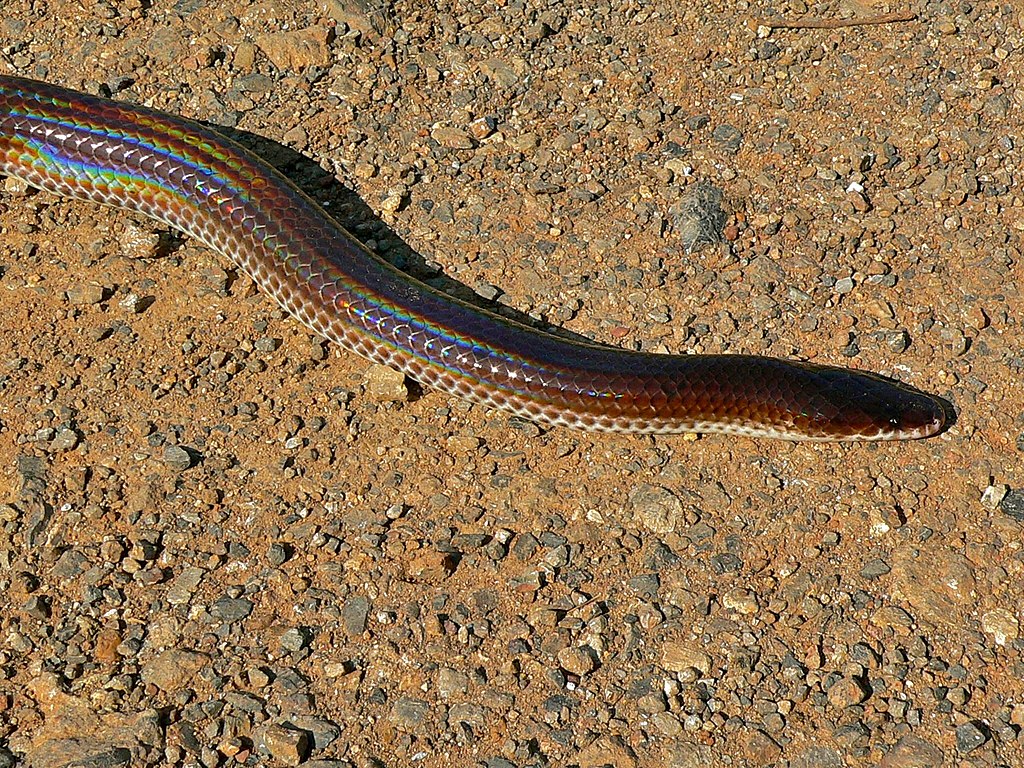
The Sunbeam Snake (Xenopeltis unicolor) belongs to the family Xenopeltidae and is native to Southeast Asia. Despite its spectacular appearance, it remains relatively unknown to the general public compared to more famous snakes like pythons or cobras. These non-venomous reptiles typically grow to lengths of 3-4 feet and possess smooth, highly polished scales that contribute to their distinguishing feature. Sunbeam snakes are primarily fossorial, meaning they spend much of their time burrowing underground, which makes their iridescent qualities all the more surprising for a creature that lives in darkness. Their sleek, cylindrical body is perfectly adapted for their subterranean lifestyle, allowing them to move through soil with remarkable efficiency.
The Science of Iridescence
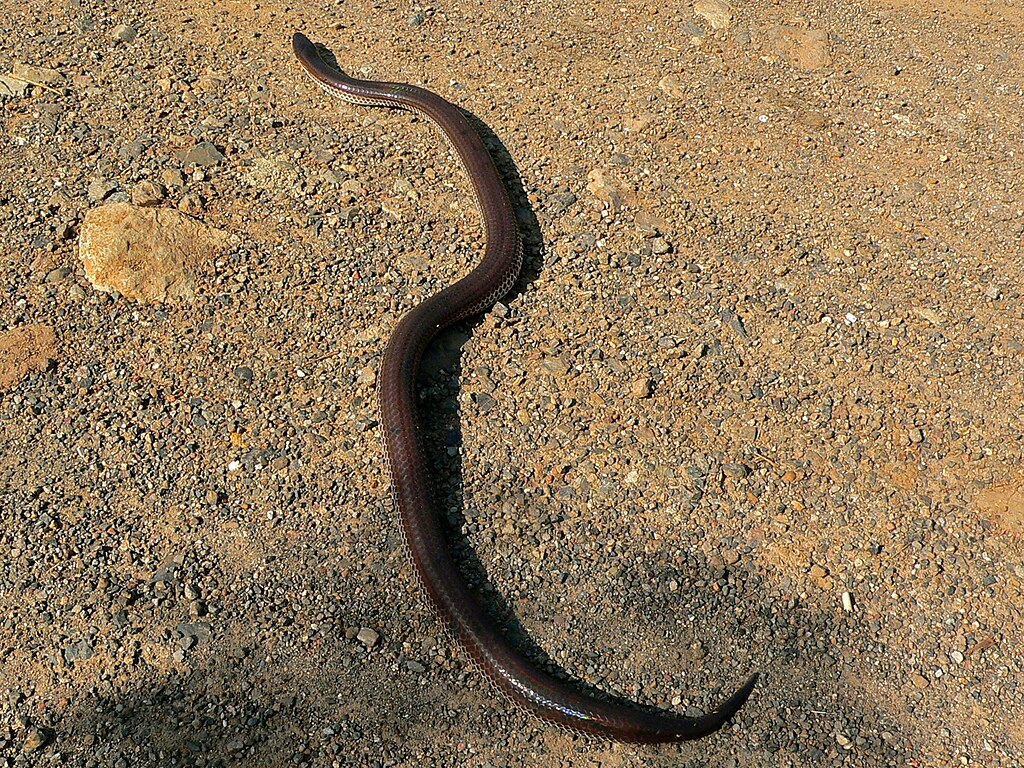
The Sunbeam Snake’s color-shifting ability isn’t actually a change in pigmentation but rather a physical phenomenon known as structural coloration or iridescence. Unlike most animals that display color through pigments, the Sunbeam Snake’s scales contain microscopic structures that interact with light waves. These structures consist of multiple thin layers that reflect different wavelengths of light depending on the viewing angle. The principle at work is similar to what creates the rainbow effect on soap bubbles or oil slicks. When light hits these specialized scales, some wavelengths are reinforced through constructive interference while others are canceled out through destructive interference, creating the shifting color effect that appears to human observers. This phenomenon explains why the snake can appear jet black from one angle and then display a rainbow of colors when viewed from another position.
The Visual Symphony of Colors
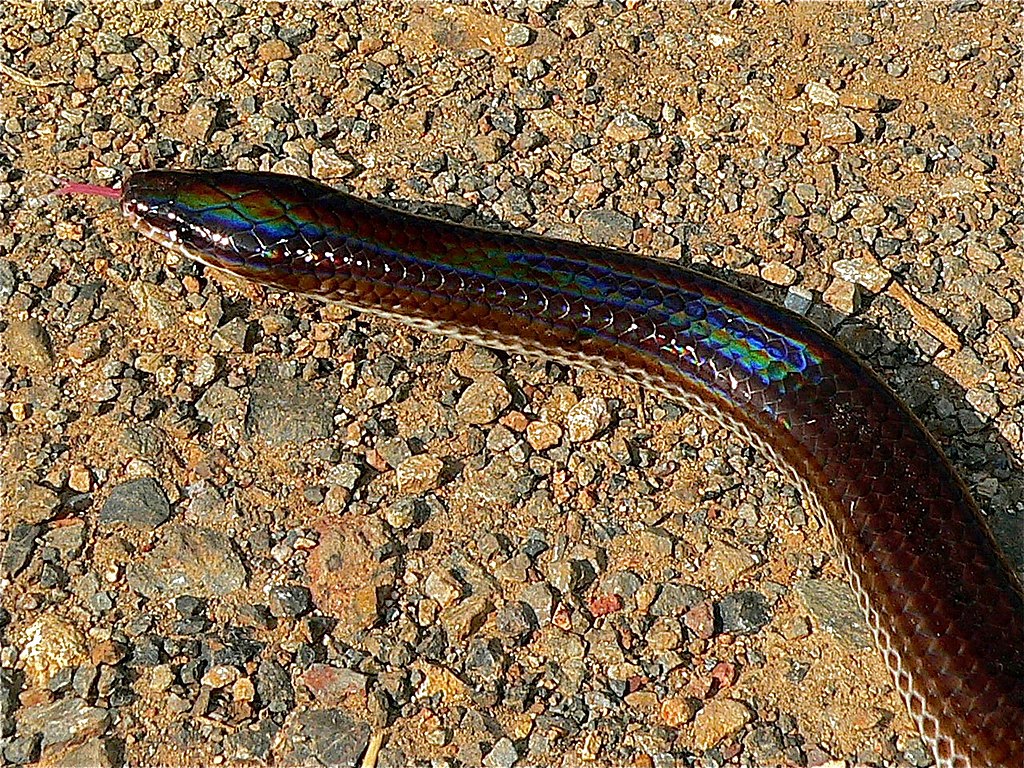
The color display of the Sunbeam Snake is truly spectacular when observed in proper lighting conditions. When viewed head-on in direct light, the snake often appears predominantly black or dark brown. However, as the viewing angle changes or as the snake moves, an astonishing array of colors becomes visible – electric blues, purples, greens, and even flashes of gold and silver ripple across its body. This effect is most dramatic when the snake is in motion, creating what appears to be waves of color flowing along its length. The intensity of this display can vary with individual specimens, with some showing more vibrant iridescence than others. Interestingly, the effect is present even in preserved specimens, although it diminishes somewhat after death.
Evolutionary Advantages of Iridescence
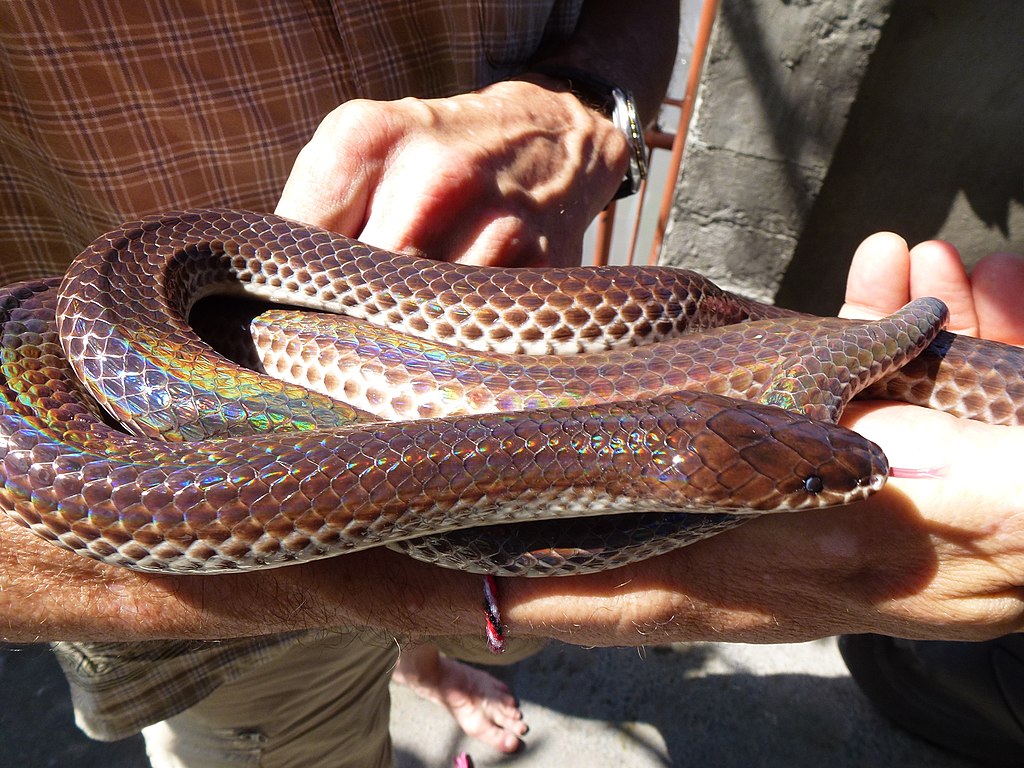
Scientists have debated the evolutionary purpose of the Sunbeam Snake’s iridescence, as it seems counterintuitive for a primarily underground creature to develop such flashy features. One theory suggests that the iridescence may serve as a form of startle display when the snake is suddenly exposed to predators. When disturbed from its underground dwelling, the sudden flash of colors might momentarily confuse potential threats, giving the snake precious seconds to escape. Another hypothesis proposes that the reflective quality of the scales may actually help the snake navigate in low-light conditions underground, with the scales potentially reflecting what little light is available. Some researchers have also suggested that the smooth, reflective scales may simply reduce friction as the snake moves through soil, with the iridescence being a beautiful but incidental side effect of this adaptation.
Habitat and Global Distribution
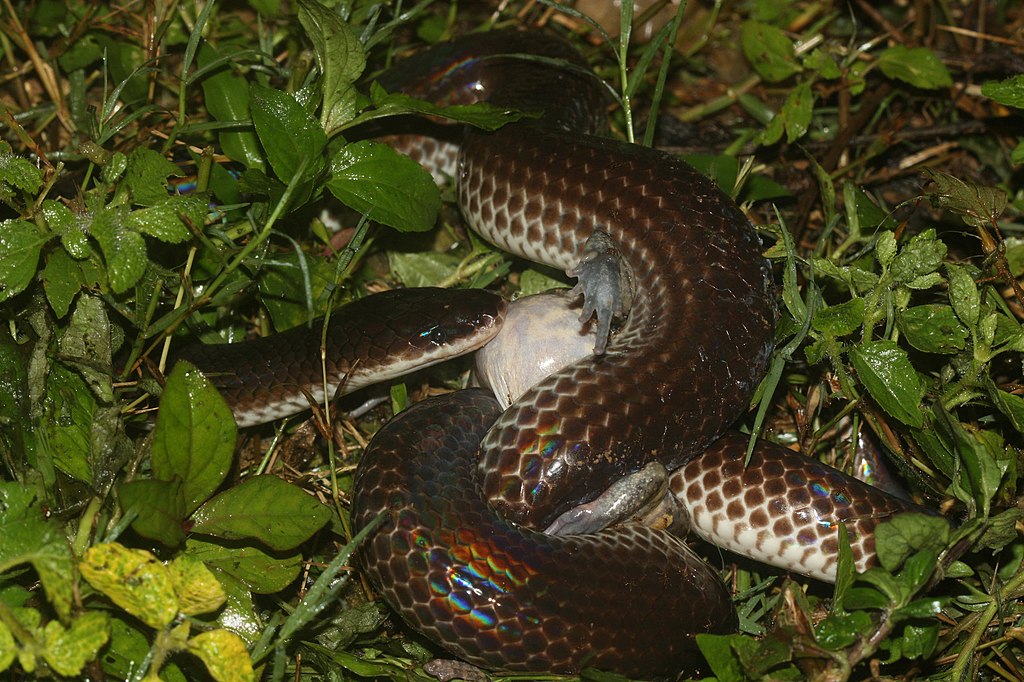
Sunbeam Snakes inhabit tropical and subtropical regions throughout Southeast Asia, including Thailand, Malaysia, Indonesia, the Philippines, and parts of southern China. They prefer moist environments such as rainforests, agricultural areas, and wetlands where the soil is loose and easy to burrow into. These snakes are particularly common in rice paddies and other cultivated fields where their prey is abundant. Their wide distribution across various habitats demonstrates their adaptability, despite their specialized lifestyle. Climate change and habitat destruction pose significant threats to their populations in certain regions, though they are not currently listed as endangered. Their secretive nature means that precise population estimates are difficult to obtain, adding to the challenge of conservation efforts.
Hunting and Dietary Habits
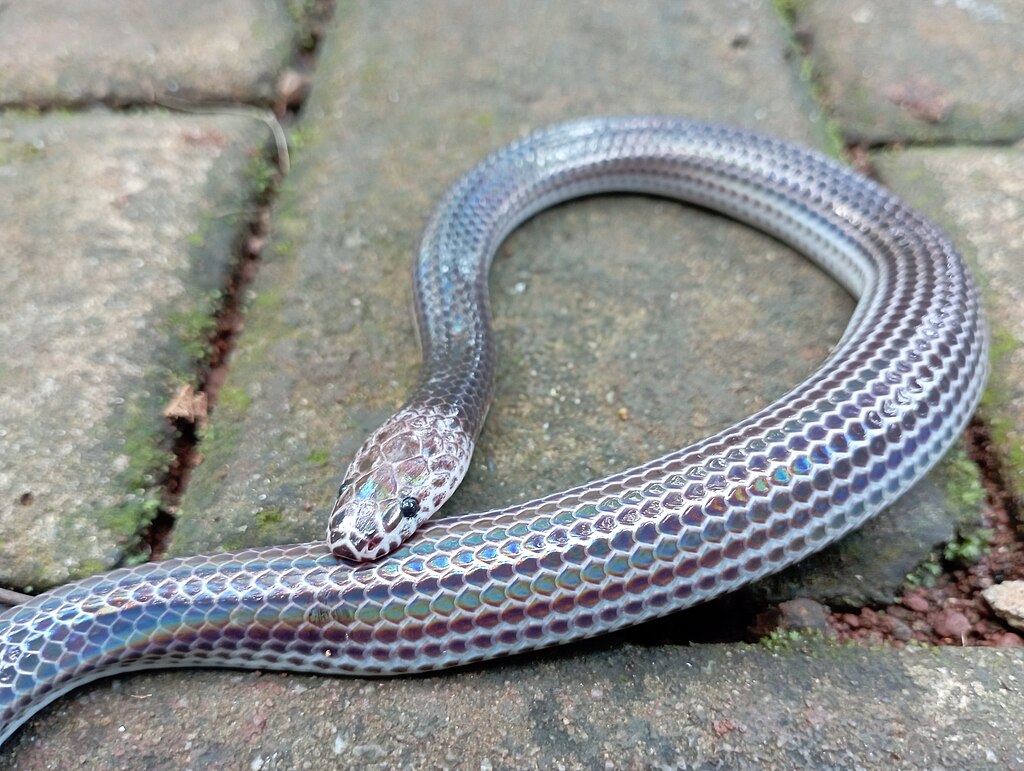
As primarily nocturnal hunters, Sunbeam Snakes emerge from their underground retreats after dark to search for prey. Their diet consists mainly of small vertebrates including frogs, lizards, small snakes, and rodents, which they overpower using constriction. Unlike many other snakes that rely heavily on vision or heat-sensing pits to locate prey, Sunbeam Snakes depend more on their acute sense of smell and touch. They are known to be surprisingly fast and agile hunters despite their burrowing lifestyle. Once prey is captured, the snake’s powerful musculature allows it to constrict its victim quickly before swallowing it whole. Their feeding habits make them beneficial to humans in agricultural settings, as they help control populations of rodents and other potential pests.
Reproduction and Life Cycle
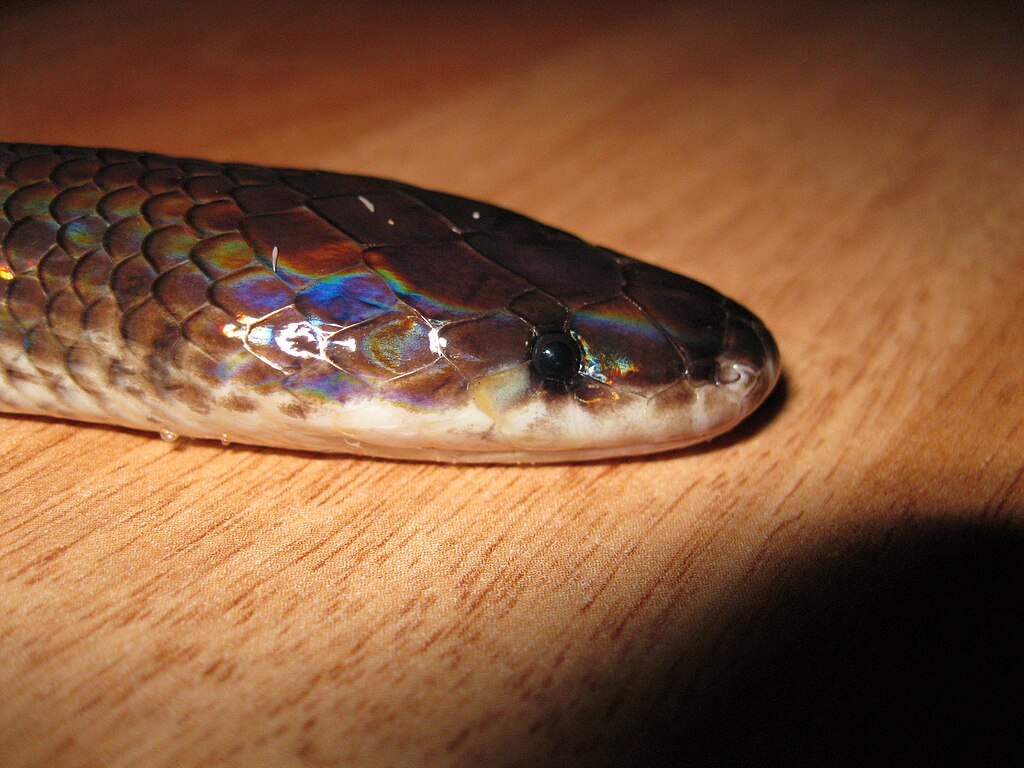
Sunbeam Snakes are oviparous, meaning they lay eggs rather than giving birth to live young. After mating, females typically lay clutches of 6-12 eggs, which they deposit in protected, humid locations such as rotting vegetation, compost heaps, or underground chambers. Unlike some snake species, Sunbeam Snakes do not guard their eggs after laying them. The incubation period lasts approximately 2-3 months, depending on ambient temperature and humidity conditions. When the young snakes hatch, they are fully independent and display the characteristic iridescence of adults, albeit sometimes less intensely. Juvenile Sunbeam Snakes grow relatively quickly, reaching sexual maturity within 2-3 years. While their exact lifespan in the wild is not well documented, captive specimens have been known to live for 15-20 years with proper care.
The Challenge of Captive Care
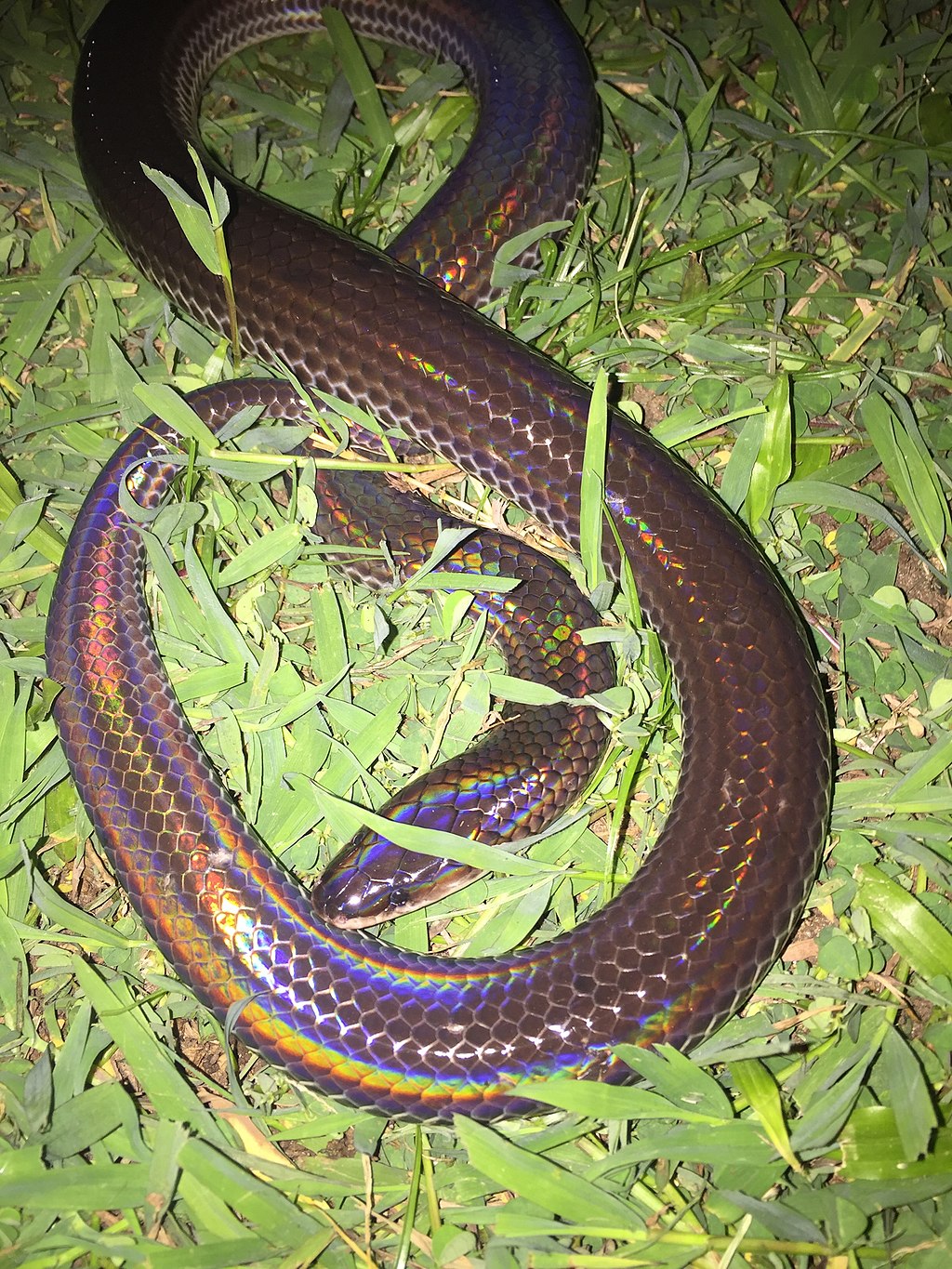
Despite their stunning appearance, Sunbeam Snakes present considerable challenges as captive pets. Their specialized burrowing behavior requires specific habitat setups with sufficient substrate depth for natural behaviors. Many specimens refuse to feed in captivity, leading to health problems and shortened lifespans. The stress of handling can also be detrimental to these secretive reptiles, which prefer to remain hidden rather than being displayed. Those who successfully maintain these snakes in captivity typically provide at least 6-8 inches of slightly damp substrate, appropriate humidity levels between 70-80%, and minimal handling to reduce stress. Their specialized care requirements have led many reptile experts to recommend that only experienced keepers attempt to maintain these beautiful but demanding creatures.
Microscopic Structure of the Scales

The secret to the Sunbeam Snake’s remarkable iridescence lies in the microscopic structure of its scales. Under powerful electron microscopes, scientists have discovered that each scale contains multiple crystalline layers with precisely spaced ridges and grooves. These structures are arranged in regular patterns that diffract light in specific ways depending on the angle of incidence. The distance between these microstructures is particularly important – they’re spaced at intervals corresponding to the wavelengths of visible light. Unlike some other iridescent animals whose colors fade after death, the Sunbeam Snake’s structural coloration remains largely intact in preserved specimens because the physical structures responsible for the effect don’t deteriorate significantly. This persistence has allowed scientists to study the phenomenon in detail through both living specimens and museum collections.
Cultural Significance and Mythology
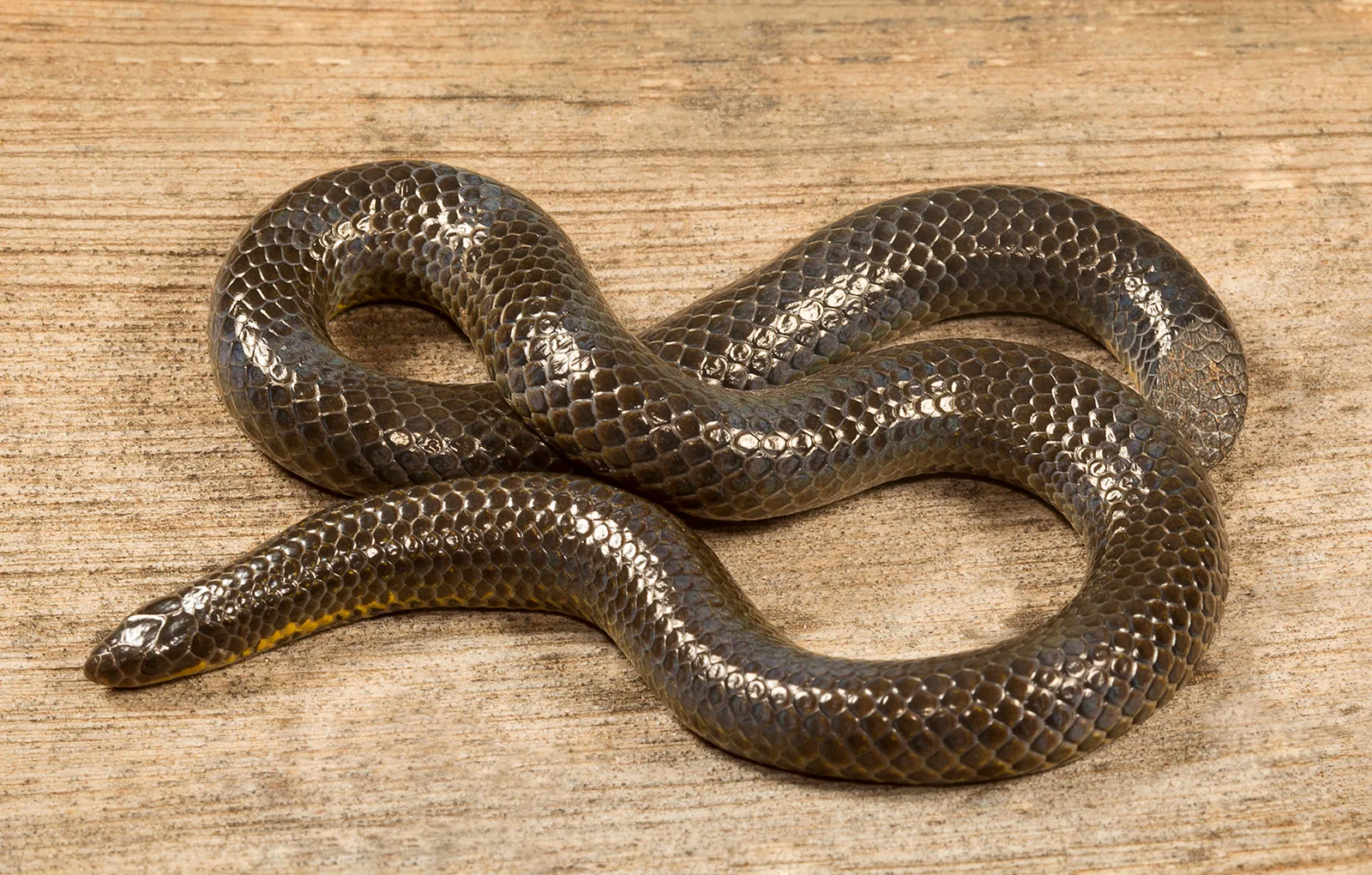
In various Southeast Asian cultures, the Sunbeam Snake has acquired symbolic and sometimes mystical significance due to its unusual appearance. In parts of Thailand and Malaysia, traditional beliefs held that these snakes brought good fortune to those who encountered them, particularly farmers who considered their presence in fields a positive omen for crops. Some local legends claimed that the snakes could absorb and reflect moonlight, guiding lost travelers through dark forests. In certain Indonesian communities, the shed skin of Sunbeam Snakes was traditionally collected and used in various rituals believing it contained protective properties. While many of these beliefs have faded with modernization, the snake continues to hold cultural significance in rural areas where traditional knowledge about local wildlife remains important.
Threats and Conservation Status
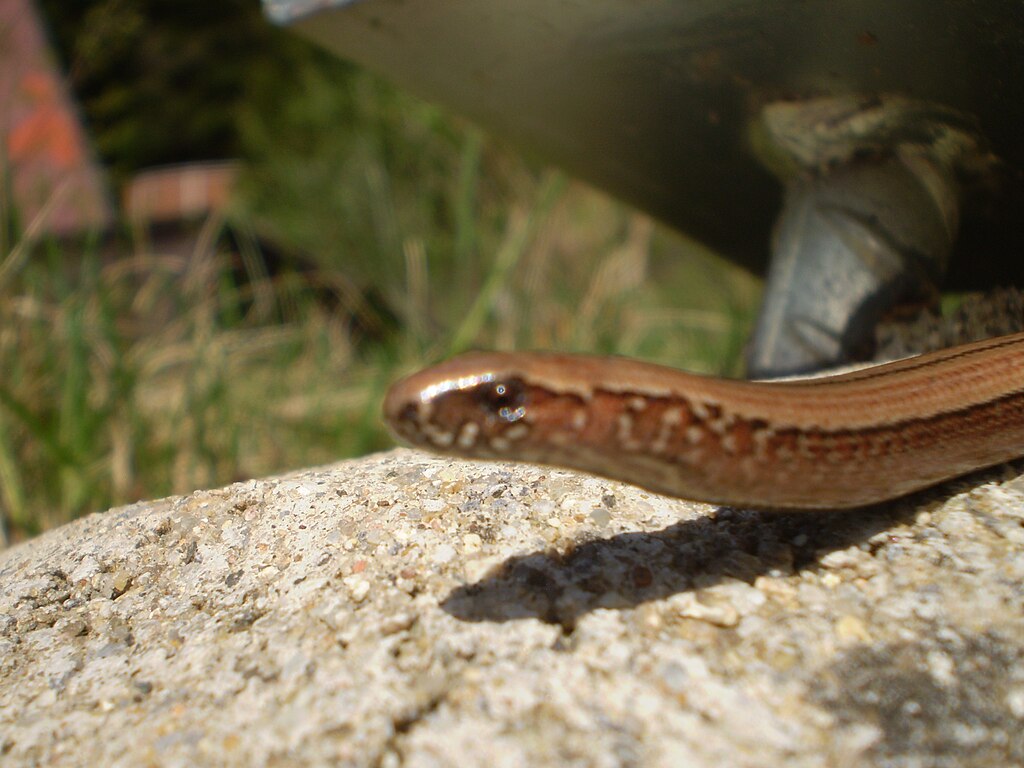
While not currently listed as endangered, Sunbeam Snakes face several threats in their native habitats. Agricultural expansion, deforestation, and urbanization have reduced suitable habitat throughout their range. The drainage of wetlands for development has been particularly damaging to their populations in certain regions. Additionally, they are sometimes collected for the international pet trade, though their difficulty in captivity has somewhat limited this pressure. Road mortality also takes a toll, especially during rainy seasons when they may emerge from their burrows and attempt to cross roads. Conservation efforts for these snakes remain relatively limited, partly due to their secretive nature making population assessments difficult. More research is needed to fully understand their conservation needs and implement effective protection measures.
Research Applications and Biomimicry
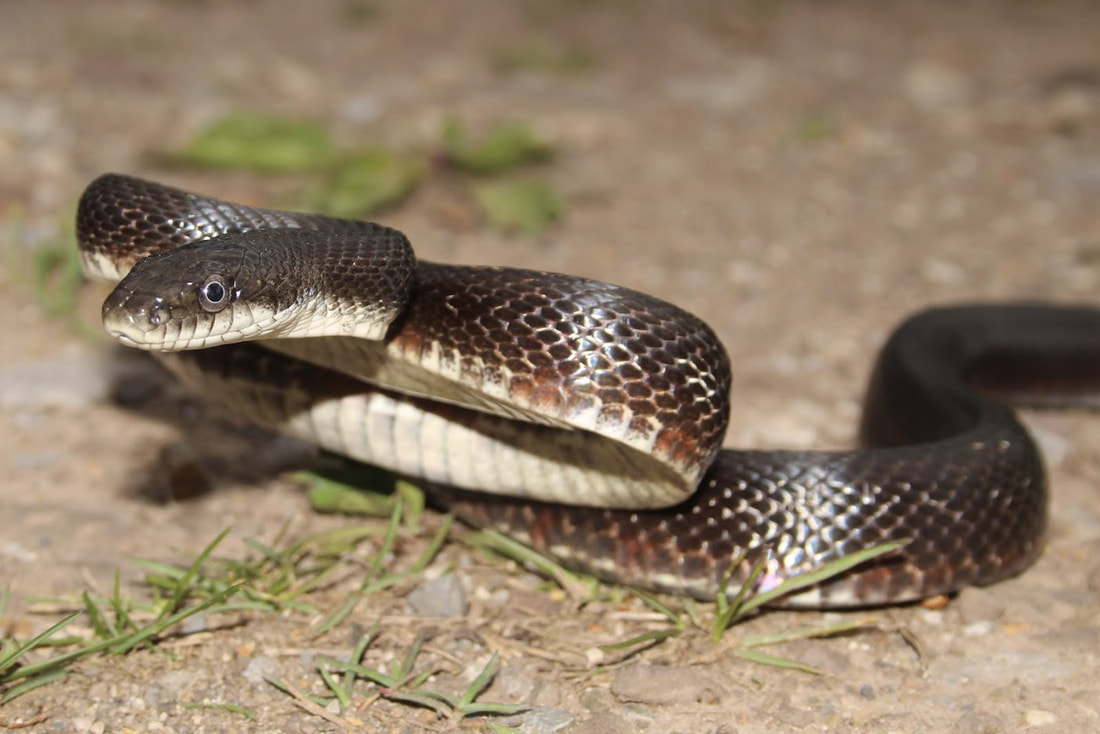
The unique optical properties of Sunbeam Snake scales have drawn attention from researchers in fields beyond biology. Materials scientists and optical engineers have studied these scales to understand how their structural arrangement creates such vivid iridescence without pigments. This research has potential applications in developing new types of reflective materials, display technologies, and even specialized coatings that change appearance depending on viewing angle. Security features on banknotes and identification documents have already incorporated similar principles to create anti-counterfeiting measures. Some researchers are exploring how to recreate the snake’s microscopic scale structure in synthetic materials that could be used for decorative applications or specialized optical components. This represents a fascinating example of biomimicry, where human innovation draws inspiration from nature’s evolved solutions.
Similar Phenomena in Other Species
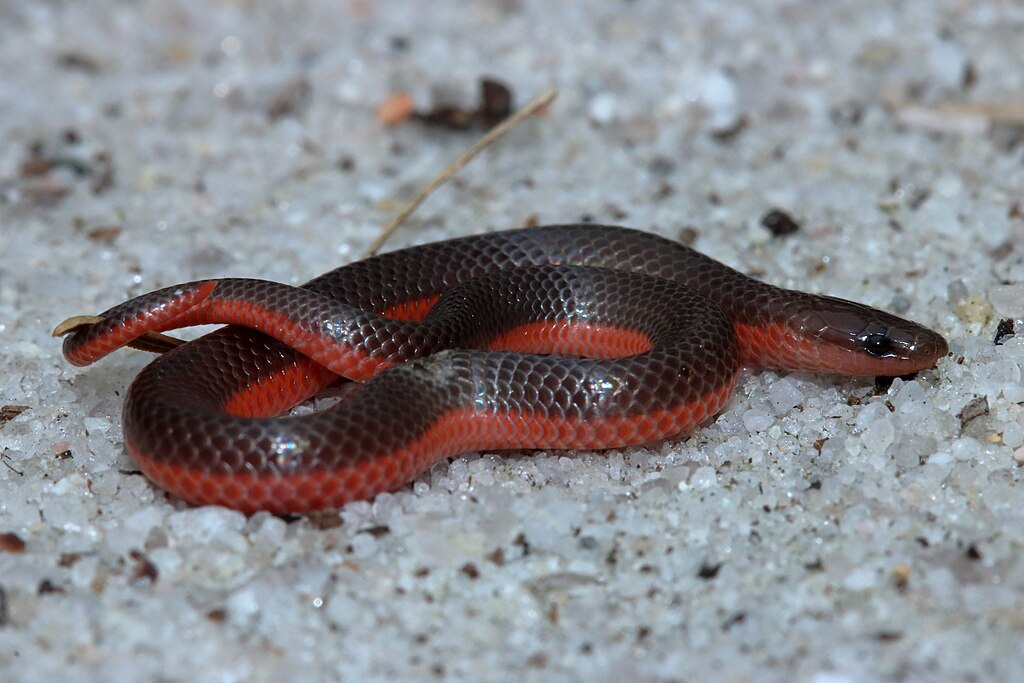
The Sunbeam Snake’s iridescence is not unique in the animal kingdom, though its particular manifestation is distinctive. Other reptiles showing similar properties include certain skinks and the Rainbow Boa, which displays a comparable color-shifting effect. Beyond reptiles, structural coloration appears in numerous species including many birds (particularly hummingbirds), butterflies, beetles, and even some fish. The feathers of peacocks represent perhaps the most famous example of structural coloration in nature. What makes the Sunbeam Snake particularly interesting to scientists is the contrast between its showy appearance and its secretive, underground lifestyle. This apparent contradiction raises fascinating questions about the evolutionary pathways that lead to iridescence in different animal groups and the various selective pressures that might favor such adaptations under different ecological circumstances.
Conclusion
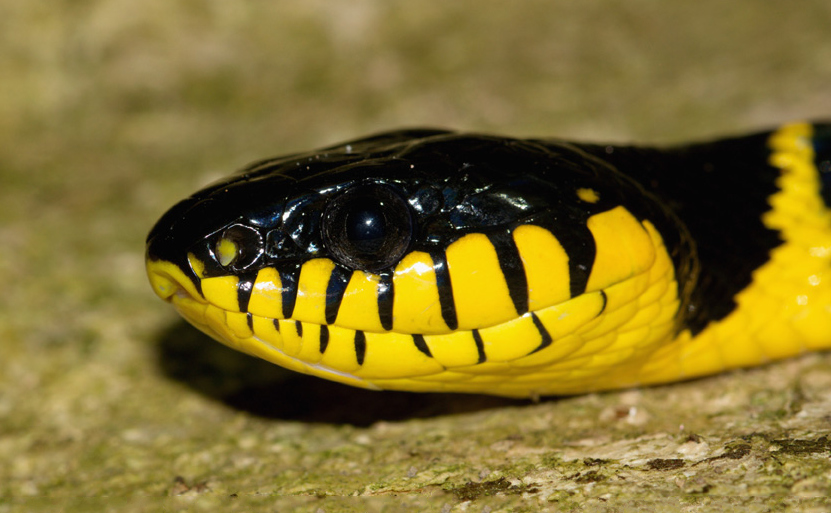
The Sunbeam Snake stands as one of nature’s most fascinating optical marvels – a creature whose appearance transforms with every shift in perspective. Its color-changing capability isn’t achieved through active pigment manipulation like chameleons, but through an intricate microscopic architecture that splits light into a rainbow of colors. This mesmerizing adaptation exemplifies how evolution can produce extraordinary solutions to environmental challenges, sometimes resulting in beauty that seems almost incidental to survival. As research continues into the structure and function of these remarkable scales, the Sunbeam Snake reminds us that even creatures that spend most of their lives hidden from view can harbor extraordinary secrets worth preserving and understanding.





